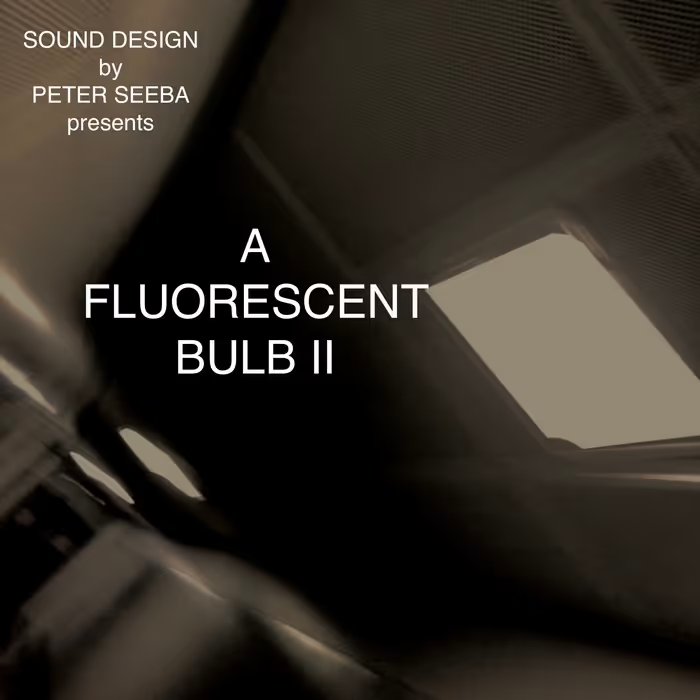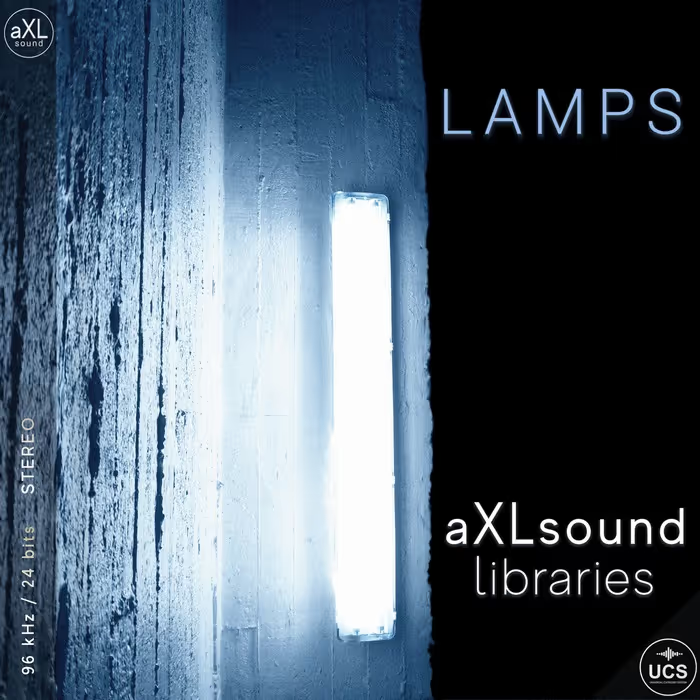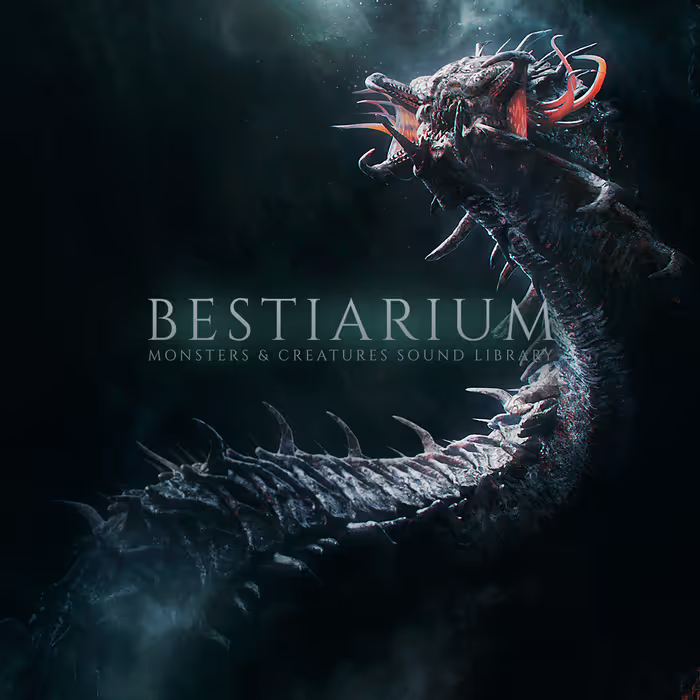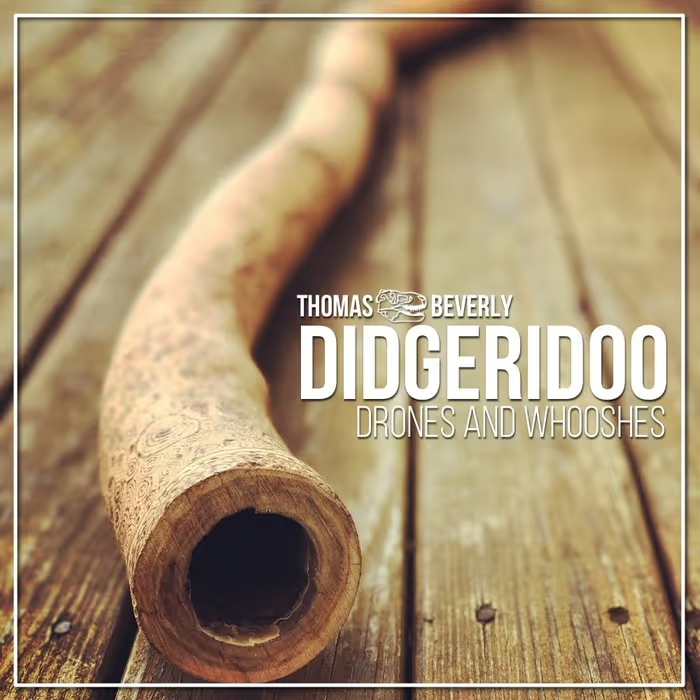The sound on the show is done by supervising sound editor Brad North and sound designer Craig Henighan and the team at Technicolor. And below, they give you the full, in-depth story on how the Stranger Things sound is done. They cover everything from how they recreated the signature sound of the 80s, to designing strange(r), mysterious, otherworldly sounds – and some very clever sound effects tricks:
Written by Jennifer Walden, photos courtesy of Netflix
The trailer for Stranger Things
Netflix’s Stranger Things is a near perfect streaming series, delivered in an easy-to-binge eight-episode package. Set in 1983, in a small Indiana town, the story follows a group of nerdy middle school kids who lose one of their own in an alternate universe known as ‘The Upside Down.’ The series is chock full of 80s era favorites, like Dungeons and Dragons, Winona Ryder, rotary phones, family dinners, TV antennas, The Clash, corduroy jackets… you get the picture. But what about the sound?
That’s where Technicolor comes in —supervising sound editor Brad North built a post sound team with dialogue editor Tiffany Griffith, sound effects editor Jordan Wilby, and re-recording mixers Joe Barnett and Adam Jenkins. They’re joined by award-winning sound designer Craig Henighan, who’s worked on Deadpool, Black Swan, and Resident Evil: Apocalypse. North and Henighan give A Sound Effect a thorough examination of their sci-fi skewed design for Stranger Things.
How did you get involved with show?
Craig Henighan: I got involved through Director Shawn Levy and his production company, 21 Laps. About a year ago, one of Shawn’s up-and-coming producers, Rand Geiger, asked if I would be interested in doing sound design on a project they were doing. I read the script for Episode 1 and then met the Duffer brothers [Matt Duffer and Ross Duffer]. At the same time, Rand was putting a team together with Brad [North] and re-recording mixers Adam Jenkins and Joe Barnett, to do the sound through Technicolor. I was the sound designer but I was on the peripheral in terms of the overall sound package.
I’d send MP3s down to the Duffers while they were shooting, like the sound of the monster and tweaked insect ambiences, just to get an idea of what would pique their interest
Before they started shooting, I was coming up with sound ideas. I’d send MP3s down to the Duffers while they were shooting, like the sound of the monster and tweaked insect ambiences, just to get an idea of what would pique their interest. After the first few weeks of shooting, they sent me a cut of the opening sequence of the first episode. That sequence set up the language of the show, like the electrical ideas and an idea of what the monster would sound like. We tried to capture the spookiness and eerie vibe of the show in that whole beginning sequence.
They also had the title music together by that time. In Episode 1, by the time we get into that shed leading up to the disappearance of Will, I had the temp music track to work against. I made little electrical sounds for the light bulb, and I had crickets and insects slowing down. Then I gave it a beat of silence and it kicks into that title music track created by SURVIVE. So that was my initial jump in. They continued to shoot and we got into the bulk of the sound work around late Feb-March.
Brad North: I started in February, going through the production tracks so we could cue up some ADR. Tiffany S. Griffith, our dialogue editor, started right around that time as well. We had a good amount of the sound work done before we started mixing, which was around April. Editorial had to get pretty far ahead because once we started mixing we went through the whole season as one chunk.
[tweet_box]In-depth: How the sound is done on Stranger Things:[/tweet_box]
In that first episode, you did a great job of sucking the audience in. The laboratory in the beginning sequence sets up the whole sound for that environment. Then we meet Eleven and all the anomalies the happen with her. There was so much established, sound-wise for the series. So that was actually the first episode that you worked on?
CH: Yes, actually the first sequence that I worked on was the opening laboratory scene with the scientist running down the hallway into the elevator all the way through to the shed with Will — everything before the title sequence. The other chunk they gave me was when Eleven comes out of the woods and goes into the diner. In there, we have the sequence of her stopping the fan, the agents coming in to get her, and then the agents killing Benny. Those were the initial, primary scenes that I worked against. The credit really goes to the Duffers, Matt and Ross. It’s all there as a piece.
It was great to work against material that was going to stay — the performances were going to stay and the pacing was going to stay
Editorially, Kevin Ross and Dean Zimmerman did great work on the picture side. Sonically, I was able to jump in and try out ideas with sequences that were really close to how they ended up in the final. It was great to work against material that was going to stay — the performances were going to stay and the pacing was going to stay. That allowed me to create sounds and create environmental ideas that they hung onto. That was how we started. Then, I was feeding my material to the picture department so they could cut with my sounds. The Avid track, from a sound design perspective, had a lot of my ideas and sounds already in there. It was good that we frontloaded our project with weeks of me sound designing and exploring ideas because by the time we got to mix, it was one episode after another. We had to get in and crank out the ideas. It was great to have that early sound design time to create the gist of how the show would sound.
What was your workflow like for the rest of the series?
CH: There were eight episodes. Dean cut four and Kevin cut four. Most times, they would send me the big sound design sequences to work on, whether it was Eleven going into the deprivation tank or something to do with the Entity, or important ambience sequences. By the time we got into the regular cutting of the show in March and April, I had already created numerous chunks of sound design. We had a lot of sequences already done so it was just about working those into the episode. Brad and I would have spotting sessions to fine-tune the sequences. Brad would identify any ADR needs or things he was handling. We would discuss what the music was going to do. We were all spotting it together with the music guys Kyle [Dixon] and Michael [Stein] on Skype because they were in Austin. Brad and I were with the Duffers, and either Dean or Kevin would be there to go through the episodes.
Popular on A Sound Effect right now - article continues below:
The score, composed by Austin-based band SURVIVE, has a very strong direction, with that uber 80’s synth sound. Were you able to work with that while creating the sound design?
CH: Yes I sure was. While I got an early, I believe that SURVIVE was on even earlier. They had been sending the Duffer brothers tons of different ideas and the picture editors would basically apply certain parts of the score and songs to different parts of the episodes.
I was able to create atmospheric sounds that would complement what SURVIVE was doing with the music
The great thing is that when I got the sequences, oftentimes they actually had the real score in. When you can create sound design against the real music, as opposed to working against temp music, it makes it that much better. I was able to create atmospheric sounds that would complement what SURVIVE was doing with the music.
Early on, I had some discussions with them, with Michael Stein and Kyle Dixon, about what they were doing. From the beginning, they established the instrumentation and the sound of the synths, to create that 70s and 80s vibe. Those guys came up with that feeling and I just looked for opportunities to work around it, by using more low-end sounds in places, or doing more atmospheric sounds in others. I knew when I could make the sound design really big or when it would be a big music section. Another aspect was all of the songs that the Duffers were choosing to earmark certain sequences, like a song from The Clash and other licensed tracks. It was great to have all that music early on.
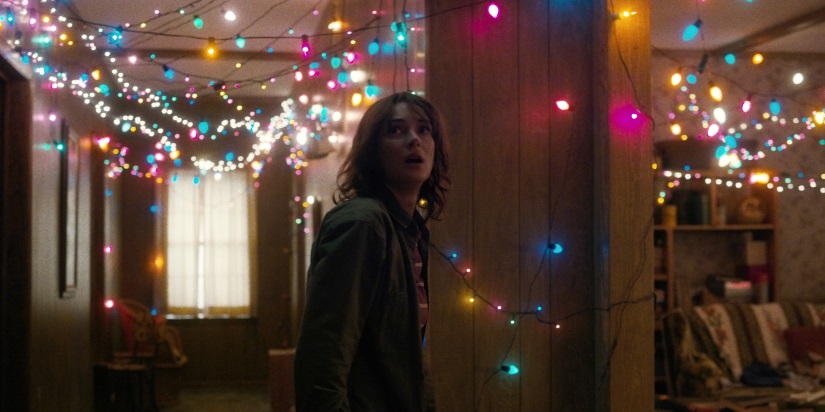
In Episode 3, you came up with a brilliant, beautiful sound for the Christmas lights turning on for the little girl, Holly, as she’s walking down the hall toward Will’s room. Then, in Will’s room, the light bulbs turn on and flicker. How did you make those light bulb sounds?
CH: They are actually pretty simple. For most of the electrical sounds, I recorded little electric things around my house, and things I had in my garage. I don’t ever throw out old electric things that make noise. I keep bins of old toothbrushes, shavers, phones, etc. The one main thing I used was my battery charger, which has a 50 amp setting on it. I recorded that and then took little pieces, to which I added light bulb filament sounds.
These are such low-level sounds – so I had to crank the heck out of them just to get them at a volume that I could use
I broke some light bulbs and Christmas lights and I recorded the sound that the filament makes when you shake it a little bit. Of course, these are such low-level sounds – so I had to crank the heck out of them just to get them at a volume that I could use. So that was the two core sounds and then the other main thing I wanted to do, either when Joyce or the little girl was following the light bulbs, was actually have a little tone play. So I found a little tone in a synth patch and I used it for a little touch.
I used Close Encounters as an idea of how to make somebody follow something in a simple sort of way. Those are the three main elements and I manipulated those using pitching and stretching, to make them feel similar but different enough, to give you a breadcrumb trail of sounds to follow. Particularly for the little girl, I wanted the sound to start small and then build up when she gets into the bedroom and the lights flicker all around her.
So, you’re the Pied Piper of light bulbs?
CH: Ha, I guess! When you are cutting and creating sound, you’re thinking, “How can I make this work thematically and make it somewhat musical?” I wanted it to be simple. Light bulbs don’t make a lot of sound in real life, so I had to find a way to augment those sounds but not go too synthetic with them. I try to root my sound design in real sounds. It was a nice opportunity to record real sounds and then give them a musical nature.
How did you create the sound of the Entity that comes through from The Upside Down?
CH: For every project that I do, I try to apply a set of rules for myself. Sometimes I stick to them and sometimes I throw them out after a little while! I didn’t want to go down the normal animal route, using pigs or cats. I think in Alien they used cappuccino makers and peacocks amongst other sounds. So I try to be aware of those sounds and initially I thought I’d try not to make the Entity out of real animals or human sounds.
I thought I could do it with dry ice and squeaks and other oddball sounds that I could record or that I’ve collected over the years. But, that sort of failed.
Initially I thought I’d try not to make the Entity out of real animals or human sounds
A lot of those things just didn’t sound right for this monster. I recorded my own voice and tried to manipulate that. I did a little bit early on with Dehumaniser (vocal processing software by Krotos, Ltd.) and other plug-ins to get something working but that sounded a little too heavy-handed.
I wanted to come up with something similar to Predator, in terms of having an identifiable vocal, because initially you don’t see the Entity. I wanted it to sonically evoke creepiness and intellect. In all of my recordings, I didn’t quite find what I wanted, but then I started looking through my libraries. I have to give credit to Tim Prebble, who runs Hiss and Roar out of New Zealand. It’s a great boutique sound design/sound effects library. Years ago I bought his seal recordings, and in there I heard a few things that I felt I could use as the hook. I took that seal vocal, and tried to pitch it and mask it, and put a lot of sounds in there so that people wouldn’t really know where it came from. But then I went back to pitching the seal vocals just a little bit, and shortening the length of it. In a cool kind of way, it’s really simple and effective, and to the point. That’s the core sound of the Entity.
When we get into the flesh, I recorded splatty sounds of water hitting flour, and other splats. I also used some great stuff from Boom Library and my good friend Rob Nokes has done a lot of specific recordings for me over the years. I had other fleshy movement sounds and door squeaks, rubber yoga ball creaks. I did some dry ice recordings that are part of the Entity’s bigger roars and screams.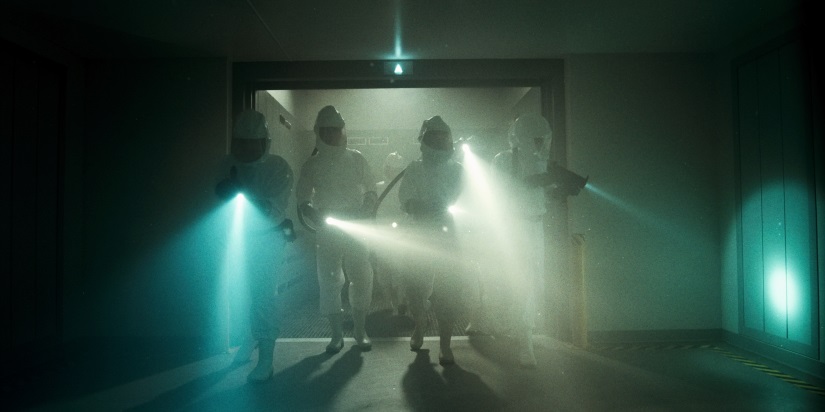
How did you design the sound for the Rift (that tentacley thing on the laboratory’s wall)?
CH: The Rift was interesting because I didn’t see it at all. We knew it was going to be alive, and sort of decaying and fleshy and wet. So I amassed a whole bunch of pulsing and breathing sounds for the Rift but it was up to Brad and the mixers to figure out when they finally saw the visual effects.
BN: Craig never saw the Rift so he gave us lots of movement, goo, breathing, and pulsing sounds to mess around with during the mix. The pulsing was great for selling the size of the Rift in the room.
The main sound for the Rift are these growly, breathing sounds that were never meant to be for that specific thing but it ended up playing really well
And then we added this growly, breathing sound. We were going to play it more like the pulsing, more atmospheric, but Matt [Duffer] heard the breathing sound dry and said he wanted to hear more of it. So the main sound for the Rift are these growly, breathing sounds that were never meant to be for that specific thing but it ended up playing really well.
We play up that pulsing sound, which had a heartbeat rhythm to it, when we see the guys walking through the Rift. There you almost see a heartbeat, which didn’t exist until nearly the last week of mixing. That was really a group effort because of the way it came down the pipeline. We mixed that sound while Matt and Ross were there, and they were guiding us towards that final sound.
How did you create the sound of The Upside Down?
CH: I knew The Upside Down would be dark and swampy but I hadn’t seen any visuals. In my first conversations with Matt and Ross, I tried to find out what this alternate reality would be like. Is it supposed to be reverberant? Is it supposed to be dead dry? You try to establish ground rules about what it is you’re trying to create. They said it would be wet, and give the impression of being wet, but they’re not going to be walking around in the swamp. It had to be spooky and haunting but at the same time be familiar. I worked with these great forest recordings with trees creaking and I tried to use a bit of comb filtering. I didn’t want it to sound like it was comb filtered though. I didn’t want it to have this robotic sort of sound. Using GRM Tools, I went through and adjusted filter settings and found one that gave me a sound that was not really a delay or a slap but just added a bit of enticement.
It’s something between a reverb and a delay. So I loop recorded long passages of me plunking around on my sampler with these different sound files. Then I re-sampled those, and then re-sampled them again. By the second or third time, that’s where the basis of The Upside Down sound happened. It developed from me imagining what this world would be, and when it came to applying it to the visuals, we don’t get to see The Upside Down until late in the series.
By the second or third time, that’s where the basis of The Upside Down sound happened
We open an episode with The Upside Down, and the camera turns, and that’s when I thought, “Oh, this could really work.” That’s when all of the weird creaks and weird spores/soft ambiences came in. There’s a bit of moaning in there.
There’s a bit of otherworldly winds. The big thing is everything is moving in those sequences and so I tried not to make anything sound static. That was a big payoff. To the Duffers credit, they didn’t put music all over The Upside Down. They chose strategic spots for music. They let the sounds work, and that’s half the trick, to have confidence in your sound design so that you don’t need to put music everywhere. When the music does come in, it’s there for a reason and it makes the scene more powerful. I can’t say enough good things about Matt and Ross in terms of their confidence in our sound team. They let us come up with something that is unique but works so well with what they are doing and with their intentions.
BN: Nearly all of The Upside Down was Craig’s work. He gave us these ridiculously cool tracks that were creative, organic, and designy all at the same time. It was wet, and weird, and organic, and dark.
Want to learn more about the sound for Stranger Things? Check out this excellent interview by The SoundWorks Collection, featuring re-recording mixer Adam Jenkins, re-recording mixer Joe Barnett – as well as Craig Henighan and Brad North:
Did you have a favorite scene to design?
CH: From an attitude and swagger standpoint, I like the opening — with the scientist running down to the elevator, and Will in the barn, where we don’t see the monster but we hear the monster come out, and then the light bulb flashing and the insects slowing down into the title music, with that Stephen King font title. That was a really fun sequence because you have everything paying off together and working in unison together. The Upside Down was fun. In addition, the Christmas lights were a fun challenge, with trying to make those work and not feel too repetitive.
I have many little things that I like. I like the end sequence with the hospital beeps that would go across cuts into The Upside Down and then back into the hospital room. There’s a great sounds in the deprivation tank with Eleven where she’s floating in this pool that they made in the school. These are all interesting things there I felt really helped the story, and helped to add eeriness and spookiness. Often the sound level would go to near silence. It was very dynamic.
BN: I really liked when Joyce was worried about Will, after the second phone call, and suddenly the lights come on and guided her down the hallway. You know it’s Will because of these tonal, sweet little things that the music is doing and that Craig does with the sound of the lights. It was a very effective scene for sound and music. Another scene was when Eleven was in the bathtub looking for Will and Barb in the Void. Our dialogue mixer Joe Barnett created some amazing reverbs and echoes that put us in this Void space. It was extremely effective when you can hear Joyce talking to Eleven in the Void. We recorded a lot of Joyce’s lines for that in ADR. We had this idea that Joyce is sweetly talking to Eleven and trying to reassure her that she is safe even though she is in this dangerous place looking for Will and Barb.
We took those extra lines from Joyce and panned them around the room, and did crazy processing on them
We took those extra lines from Joyce and panned them around the room, and did crazy processing on them. That was cool too because you are kind of in Eleven’s head. This is all a product of everyone doing their job at the highest level, with Craig and Adam Jenkins our sound effects mixer, and Joe Barnett our dialogue mixer.
We had another sound effects editor who did an incredible job, Jordan Wilby. It’s something special to work with someone like Craig and to be given all of that sound design. It was our job in editorial to support that. Since Craig was ahead of Jordan, he was able to give us a lot of the sound design while Jordan was cutting. Jordan was able to use that as a guide track and cut different sounds against it. That way it all sounds seamless. Jordan did a great job supporting with additional sound effects, and doing sound work on his own that doesn’t butt up against the music or with what Craig was doing. It was a great team effort.
What are some tools you used for your sound design on the show?
CH: I was able to run sounds through my sampler, to change the pitch and edit them differently. Tenderize them, shake them, and stir them with the different plug-ins to come up with unique sounds. The biggest challenge was making things fit into that 80s timeframe, which has a very analog feel but it’s also the beginning stages of digital. I didn’t want the sound to have too much high fidelity.
The biggest challenge was making things fit into that 80s timeframe, which has a very analog feel but it’s also the beginning stages of digital
If sounds didn’t have a really wide frequency range or maybe if they were a little distorted, I could make those fit in better. Those were the ones that inspired me the most. I like using Native Instruments Kontakt as my sampler. In Pro Tools, I like using Waves GTR Stomp to set up two or four or six different types of stomp boxes. I’ve been using Excalibur from Exponential Audio. I used Slapper from The Cargo Cult a fair bit. I’m a big fan of Soundtoys and GRM Tools.
I have this chain set up in Pro Tools so when I record in from Kontakt I can turn on and off different plug-ins and that gets me inspired. I tend to use iZotope’s Stutter Edit to break up common sounds. That gives me these jagged chunks to pull from. I use SoundMorph’s TimeFlux and Wave Warper. I like to record for a long time and just explore. Then I go back and cherry pick out certain things. That’s really how a lot of the electrical ideas came about for this series. I’ll take those pieces and further manipulate them. I equate it to taking a hammer and smashing the sound and going through all the pieces. A lot of stuff gets discarded but I’m just looking for little things that I can apply or that inspire me.



